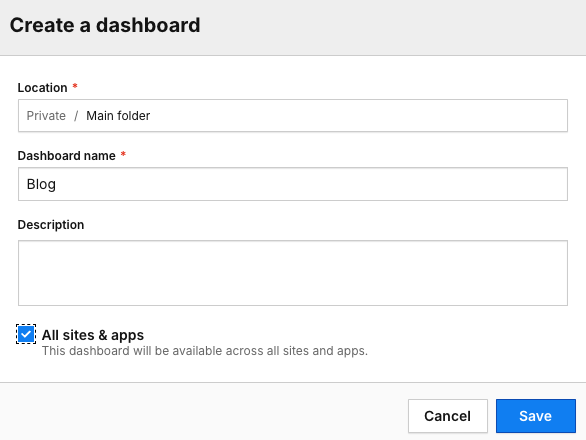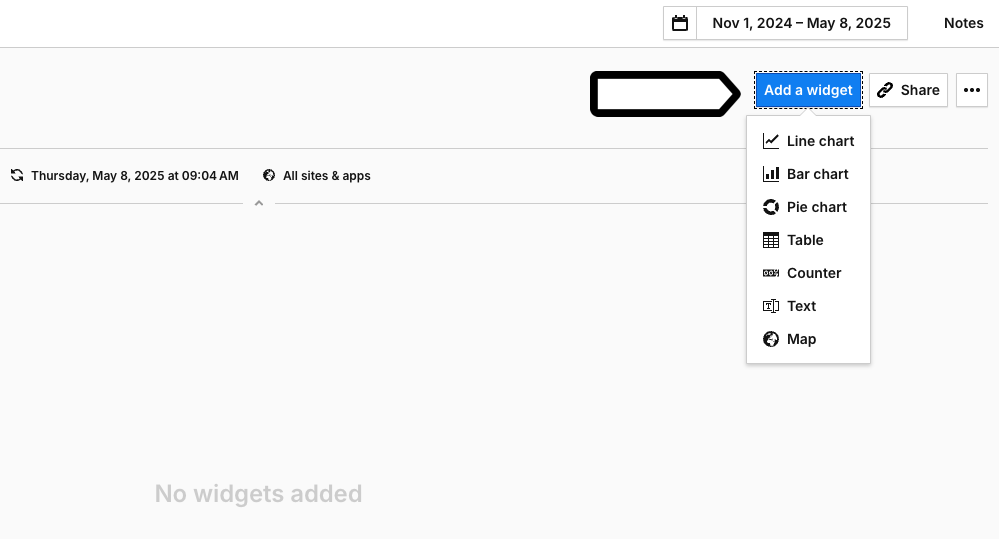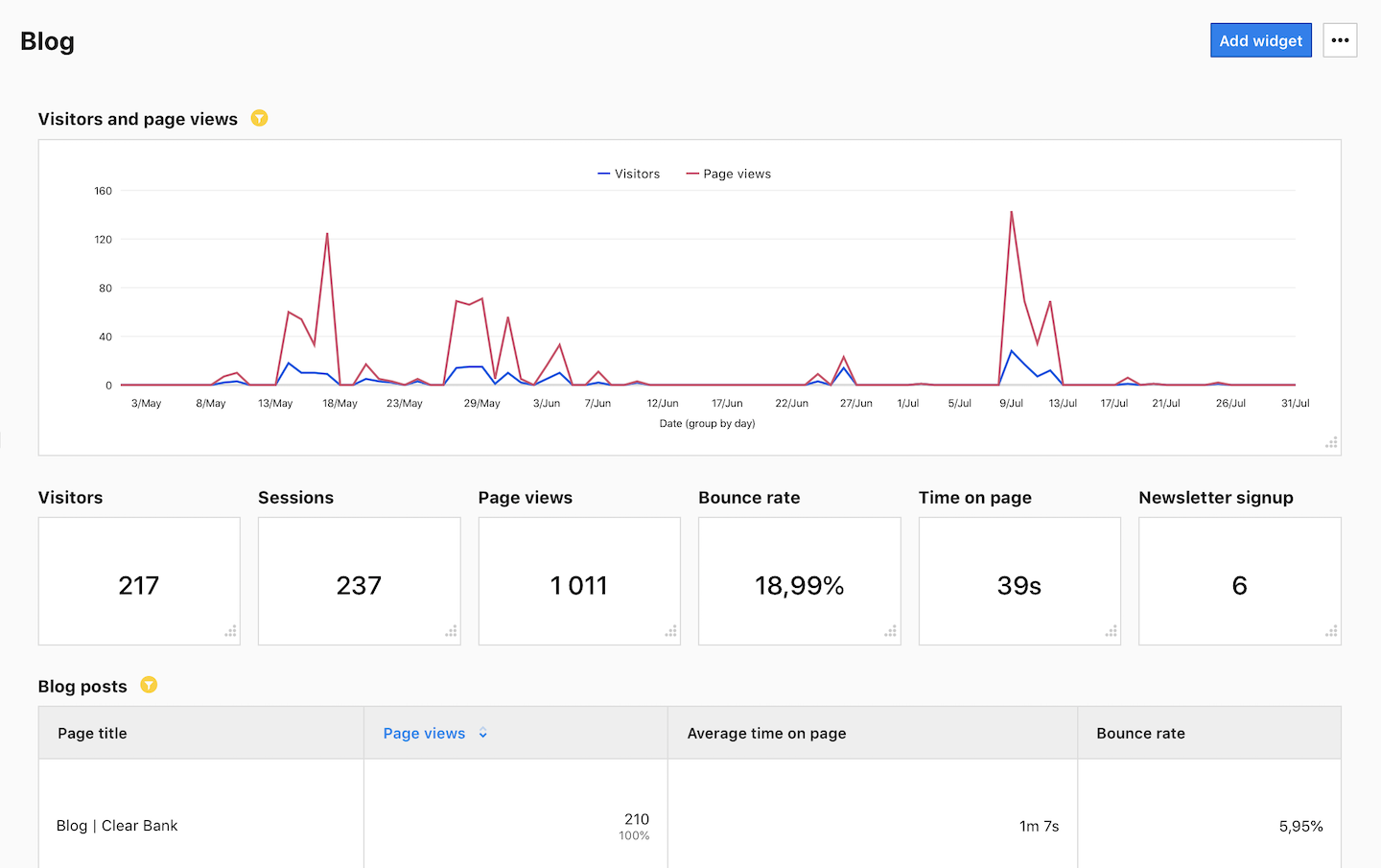So far, you’ve learned about segments, reports and tagging campaigns. You’ve surely noticed that there are tons of metrics with different meanings in reports. Each report can show you visitor behavior from a unique perspective. Depending on the angle you want to look from, you can compose a dashboard or export data and work with it on a spreadsheet.
Dashboard
The dashboard lets you see the reports of your choice at a glance. You can create several dashboards and set them up as you wish. There are a few dashboards set as default. You can modify them or create new dashboards.
To create a new dashboard, follow these steps:
1. Go to Menu > Analytics.
2. Navigate to Dashboards.
3. On the left, click Add a dashboard.
4. Under Location, choose the folder where you want to create the dashboard.
Note: You can use folders to organize your dashboards, goals, and custom reports. Add shared or private folders directly in the UI, no setup needed.
5. Name the dashboard.
6. (Optional) Add a description for your dashboard.

7. (Optional) Check All sites & apps to make this dashboard visible across all sites and apps.
8. Click Save.
9. On the right, click Add a widget and choose one of the following types: Line chart, Bar chart, Pie chart, Table, Counter, Text or Map.

Note: Text and map widgets are available from version 16.4.0 onwards.
10. (Optional) Name the widget.
11. On the right, select the data you want to see on the dashboard. Depending on the type of widget, you can either select metrics or a combination of metrics and dimensions.

12. Drag and drop the data into the designing space.

Note: For a table widget, you can set default sorting options. This makes the data appear in the report in a specific order based on the selected dimension or metric.
13. (Optional) Apply filters to dimensions or metrics. For example, if we only want to see data from our blog, we can apply the following filter: Page URL contains blog.

14. When you’re happy with the widget, click Save.
15. Create and add other widgets.
16. When done, drag and drop widgets to where you want them on your dashboard.

17. (Optional) You can star your dashboard to make it appear at the top of the list.

18. Bravo! Your dashboard is ready.
Tip: Send your teammates a link to your dashboard by simply clicking Share in the upper right corner. But note that you need to make the shared dashboard visible to “All users” – not just you – and these users need to have access to your site/app.
You can make changes to your dashboard, copy it to another site/app, save it as a PDF or delete it at any time.
To do this, follow these steps:
1. Go to Menu > Analytics.
2. Navigate to Dashboards.
3. Select the dashboard you want to work with.
4. On the right, click the ⋯ three-dot icon.

5. Click on one of the following options: Edit, Copy, Delete, Save as a PDF or Create a PDF scheduled report.
6. Follow the steps on the screen.
7. Done!
Tip: Click the ⋯ three-dot icon on the widget to edit, copy, delete a widget or export data from the widget.
Export data
Every time you want to use a spreadsheet to work with your data you can export one from a report. It can help you with in-depth researches of your website, as well as with collecting data from various reports. You can simply put together several reports with various metrics and keep only the data most important to you.
To export data from a report, follow these steps:
1. Go to Menu > Analytics.
2. Navigate to Reports.
3. On the left, select the report you want to work with.
4. Click Export in the upper right corner.

5. Select the data you want to export and select the file format.
6. Open the exported file in a spreadsheet – Excel, Google Spreadsheet, Numbers or the like.
Tip: If you want to use data in a spreadsheet, you can export the report to a CSV or XML file. For more advanced tools, use a JSON or JSON (KV) file format.
